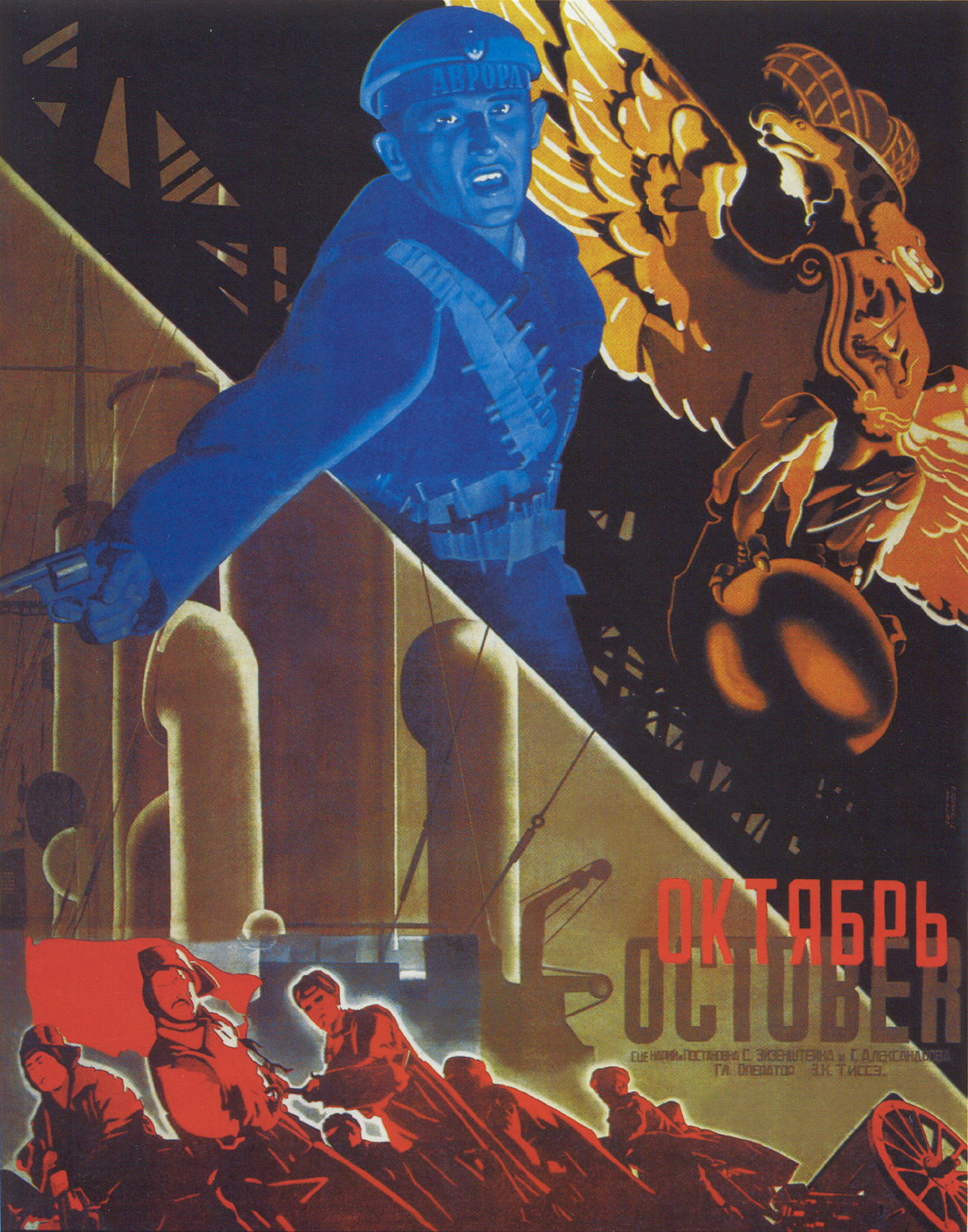 |
| Poster for Sergei Eisenstein's film, October. |
This post is indebted to a number of books, most especially Orlando Figes, A People's Tragedy: The Russian Revolution, 1891-1924 (Pimlico, 1997).
Key places
- The Smolny Institute, a former secondary school belonging to the ‘Society for the upbringing of Well-Born Girls’, founded by Catherine II. It had been the headquarters of the Soviet Executive since the July Days. The Bolshevik Central Committee was in Room 36. The Military Revolutionary Committee met on the 3rd floor.
- The Winter Palace where Kerensky had transferred his headquarters in July.
- The Petrograd garrison.
- The cruiser Aurora moored opposite the Winter Palace.
- The Mariinsky Palace: home of the Pre-Parliament, a recently appointed body, giving a facade of democratic government until the Constituent Assembly met.
Key organisations
- The All-Russian Congress of Soviets (not yet dominated by the Bolsheviks, though they were rapidly gaining influence).
- The Military Revolutionary Committee. This had been formed on 12 October and held its first organisational meeting on 20 October. It was a Bolshevik organisation, though it included Left Socialist Revolutionaries. Its real leader was Trotsky.
After the resolution of 10 October, the Bolsheviks had decided on a revolution, but still did not agree on the date. Against fierce opposition from Zinoviev and Kamenev, Lenin continued to argue for a pre-emptive seizure of power before the meeting of the All Russian Congress of Soviets.
 |
| The Winter Palace, now the Hermitage Museum and Art Gallery. |
On 23 October, Kerensky ordered the closure of two Bolshevik newspapers, closed down the bridges over the Neva River and ordered troops to defend the Winter Palace. The cruiser, Aurora, whose sailors were heavily Bolshevik, was put out to sea. Within a few hours, however, it had returned to its base.
On 24 October, Trotsky, from his headquarters in the Smolny, set in motion the counter-measures to coordinate the revolution. On the night of 24-5 October the Red Guards secured the armoury at the Peter and Paul Fortress, and seized control of railway stations, post and telegraph offices, the state bank, and the electricity station. By dawn, they were in control of most of the city with the exception of the central zone around the Winter Palace. Kerensky fled the capital in the US ambassador’s car in search of troops. Members of his Cabinet remained in the Winter Palace.
On the morning of 25 October Bolshevik soldiers and sailors dispersed the Preparliament deputies in the Mariinsky Palace. By this time about 5,000 sailors had arrived from the Kronstadt base, and this was sufficient to ensure the success of the uprising. Lenin made his way in disguise to the Smolny where Trotsky announced to an emergency meeting of the Petrograd Soviet that ‘Kerensky’s power has been overthrown’. Lenin then harangued the meeting on the need for a Soviet government ‘without any participation whatever by the bourgeoisie’. This was the moment when he took over the revolution and his party. Power could now be presented as a fait accompli and Mensheviks and the Socialist Revolutionaries were to be excluded.
At 6 pm the assault on the Winter Palace began. This so-called ‘storming’ was more like a house arrest since most of the defending forces had left for home before the assault began. (More people were killed during the filming of Eisenstein’s October than in the actual storming.) Technical factors had prevented an earlier assault: the Baltic sailors arrived late, field guns discovered at the last moment were found to be inoperable, no red lantern could be found to start the assault. From Lenin's point of view, these delays were infuriating – it was vital to him to have the seizure of power completed before the opening of the Soviet Congress. But in fact, the Winter Palace could have been taken at any time. The building was defended by two companies of Cossacks, some young cadets from the military school, and 200 women from the Shock Battalion of Death - about 3000 soldiers in all. Morale was very low and they were short of food and ammunition. By the evening only 300 were left.









